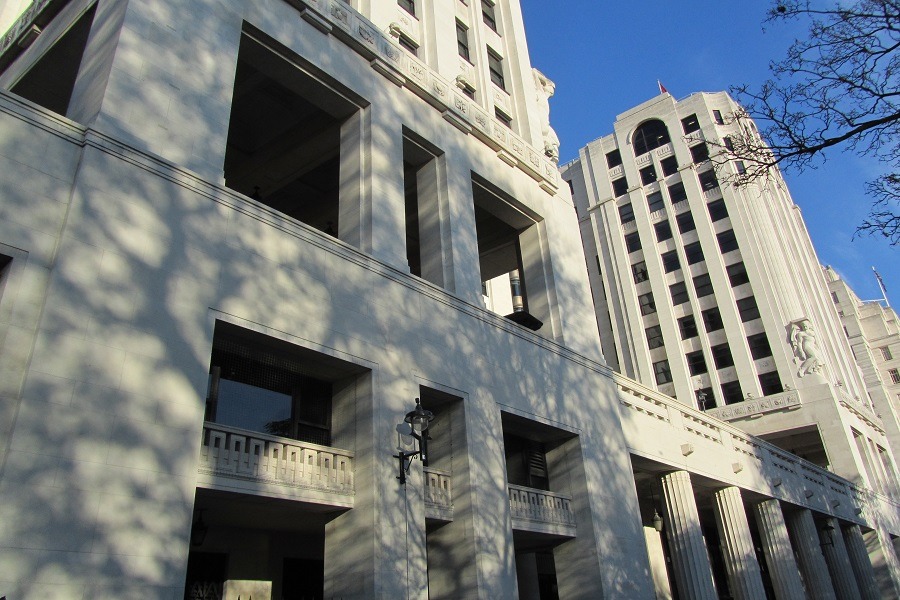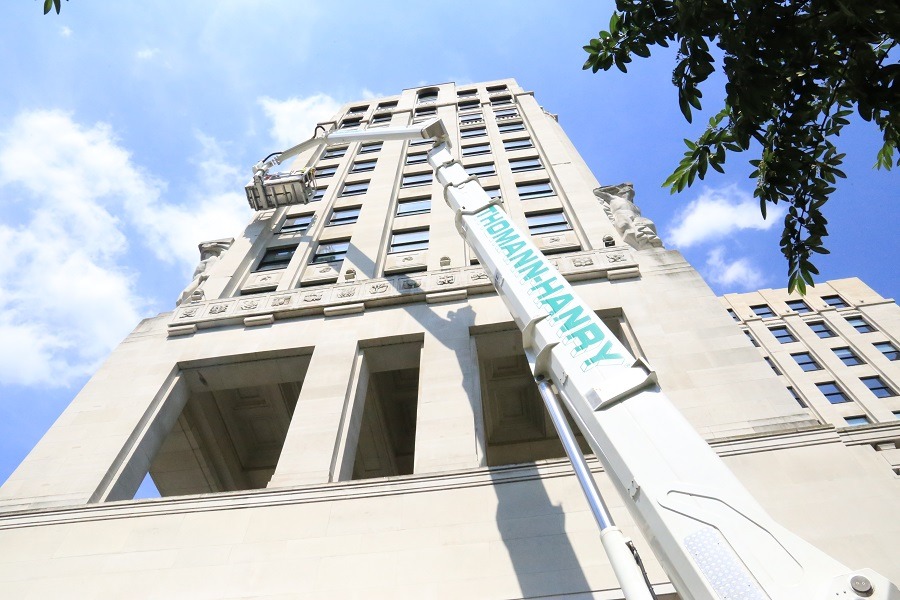The Adelphi

Built by John, Robert, James and William Adam as a block of unified terrace houses between 1768 and 1772, the Adelphi Terrace derives its name from the Greek word adelphoi, meaning brothers. It was London’s first neoclassical building, with large houses fronting a vaulted terrace with wharves beneath.
Eleven years, three clients, one iconic landmark.
As one of London’s leading restoration specialists, Thomann-Hanry® are used to satisfied clients returning with new projects on familiar buildings. However, The Adelphi Building, situated between The Strand and River Thames, has set the pace for most repeat visits to tackle new challenges.
Over the years, the Adelphi Terrace has been home to many notable luminaries from the world of literature, including Sir JM Barrie, Thomas Hardy and George Bernard Shaw, who also co-founded the London School of Economics and Political Science there.
Opposed by many, the demolition of most of the original terraced houses in 1936 is now regarded as one of the key moments in the nascent preservation movement of the early 20th century. Ironically, the office block that replaced the Adam brothers’ original structure is now itself a Grade II listed building, its monumental Portland Stone façades celebrated as fine examples of metropolitan art deco architecture.
Thomann-Hanry® were first approached to clean the north elevation of the building in 2009 using façade gommage®, our patented technique. The process gently lifts away accumulated dirt and grime by projecting fine powders under compressed air across all masonry surfaces. Considerably less aggressive than water- and chemical-based cleans (and far more environmentally friendly) the process is perfectly suited to listed and historical structures. Façade gommage® is carried out from sealed cabins on hydraulic lorry-mounted booms, making it agile, efficient and quick – with an entire 6,675 sq. m. elevation completed in around 20 days. Better still, the process eliminates the need to shroud a building in costly and unsightly scaffolding for months on end – a huge advantage for occupants, visitors and passers-by.
Delighted with the results of the first clean, owners P&O Estates invited Thomann-Hanry® back to work on the south elevation in 2010, with a complete clean of the east elevation following in 2018. The building has undergone several changes of ownership in the intervening years, changing hands from P&O to Blackstone and, in 2018, to current owners Pontegadea in a deal worth £550 million.
Throughout, Thomann-Hanry® have been retained for building survey, conservation, repair and cleaning works. These have included a large programme of concrete repair to corroded steelwork in the balconies on the north elevation, replacement of fractured blocks in the south elevation – again due to corroded steel – and further remedial work on balconies and steelwork in early 2020. Due to the varying challenges presented, different machinery was used for each project, from a special MEWP-mounted block grabber for the south elevation to a suspended cabin for cleaning works.
There can be no stronger endorsement of a company’s work than an invitation to return to tackle new challenges. As such, The Adelphi Building is a powerful testament to the enduring benefits of working with Thomann-Hanry®.











